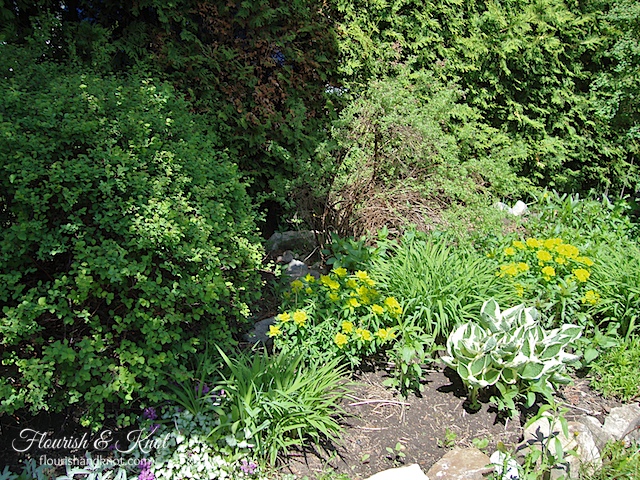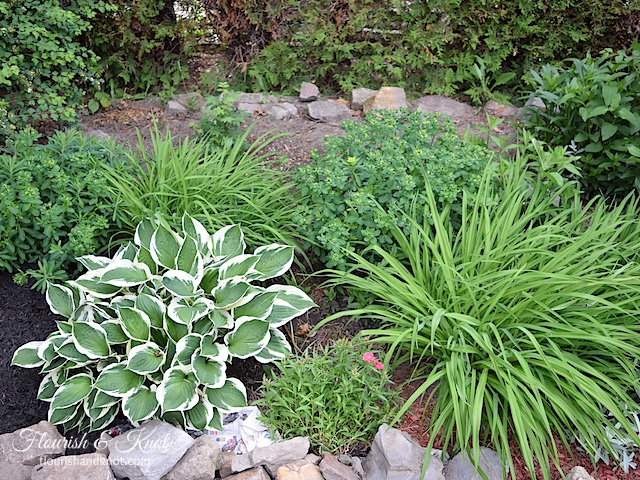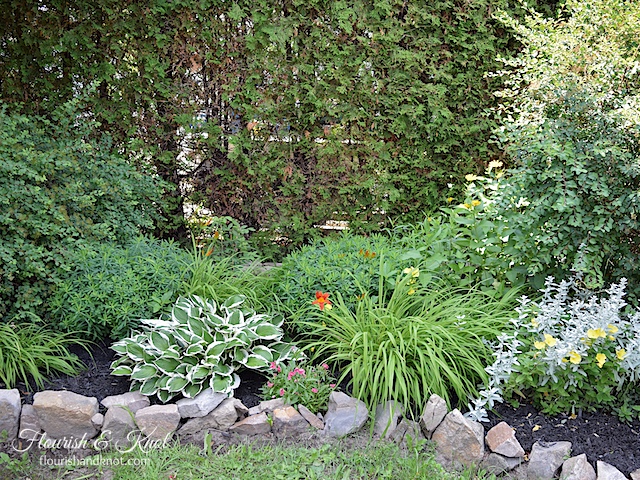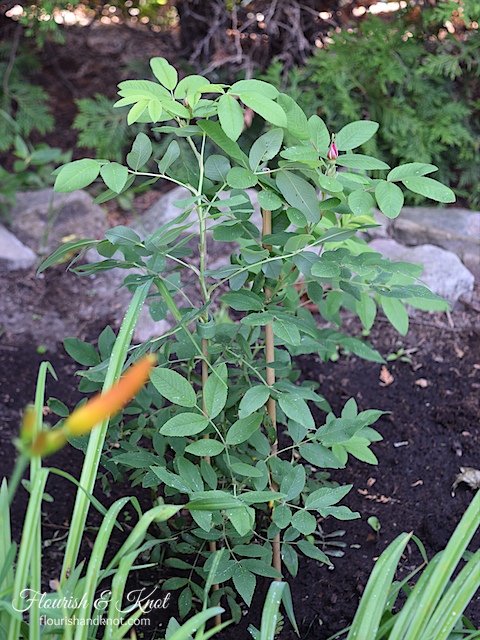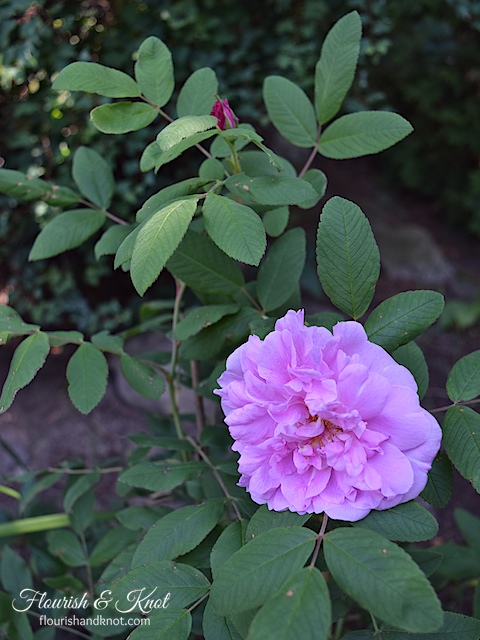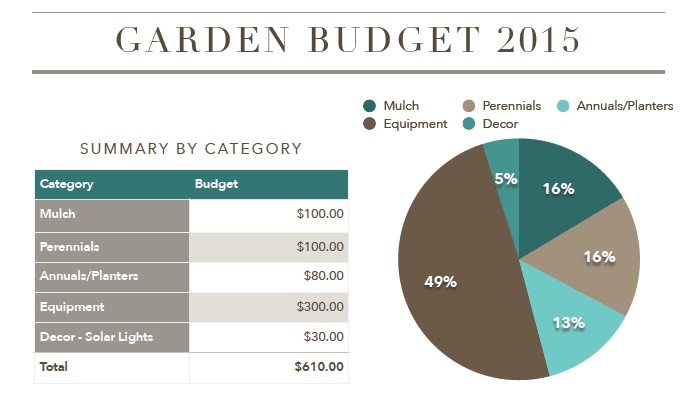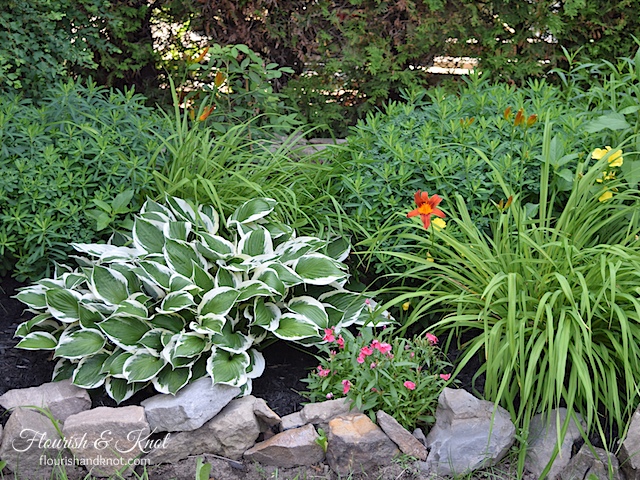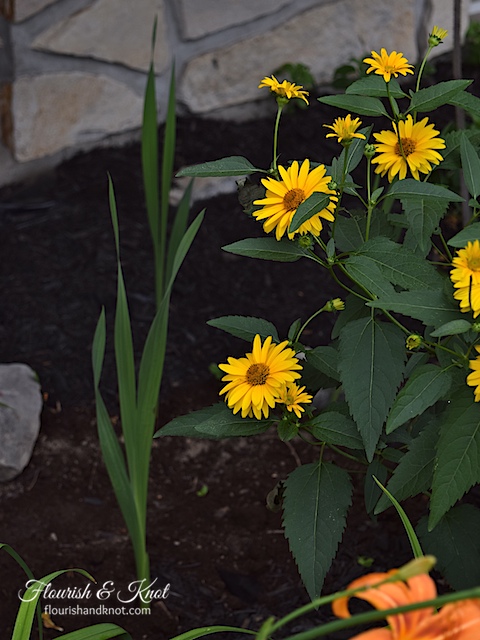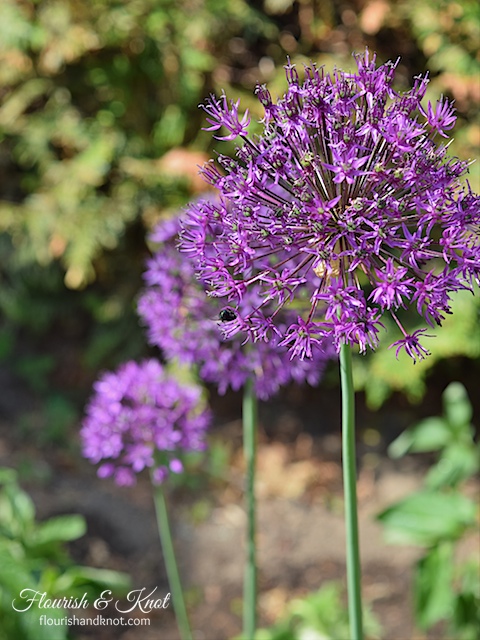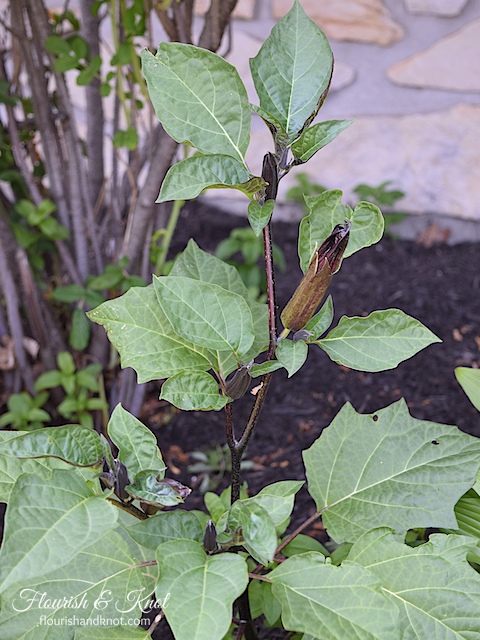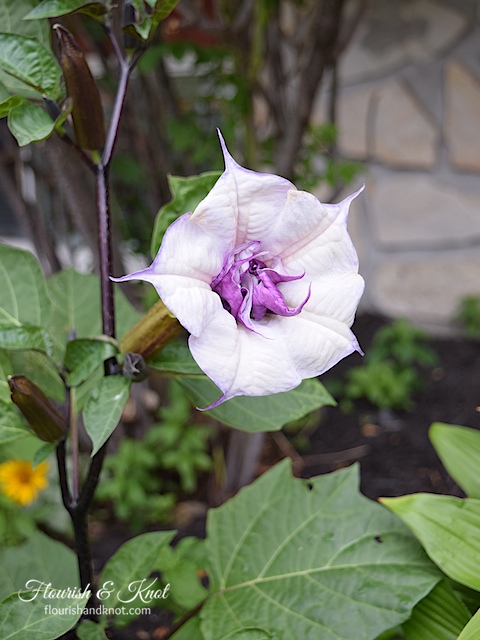I’ve learned SO much in the two years I’ve had a garden. (And I have only just dipped the tip of my big toe.) But, in an effort to help other newbie gardeners (or maybe experienced gardeners who are faced with a new garden), I’ve coralled my Top Ten Tips for the « Green » Gardener. Starting or keeping a garden can be a daunting task, especially if you’re new to it. Here’s my advice on gardening for beginners… from one beginner to another!
Top 10 Tips: Gardening for Beginners
1. Observe and Take Notes – During your first year with a garden, you’ll be tempted to dive right in and either start ripping everything apart in an effort to make it « yours » (if you are inheriting a mature garden), or PLANT ALL THE PLANTS (if you’re starting a garden). « But I would never do that! I’m much too intelligent and rational and mature to be so flighty and over-enthusiastic, » you cry!
Uh-huh. Just wait til that patch of earth emerges from the snowbank and THEN tell me if you don’t still want to plant EVERYTHING.
But wait! You need to watch and see what grows (well) where, and how the sun hits each section, and what kind of soil you have. I know it’s hard to be patient, but gardening is an exercise in patience.
Exhibit A: Garden 2014
I was dying to get my hands on that scraggly-looking bush in the back, but everyone had told me to wait a year, so I did. Once it was proved to be beyond redemption, I ripped that baby out and put in a Therèse Bugnet rose. We also replaced our misguided red mulch (the top photo actually pre-dates the red mulch) with black. So mulch better!
Here you can see where we had already replaced the red with black mulch.
That was the rose two days ago. And this is today:
Take careful notes of the Five Ws of Gardening: What was planted, where was it planted, when was it planted/did it shoot/flower, why did it succeed/fail/get moved, how often you needed to water it.
2. It’s Not Cheap – Pinterest is full of « Great Ways to Garden on the Cheap ». There’s a difference between cheap and frugal, though. The frugal gardener understands that a garden means long-term investment, not short-term gratification.
So how exactly can one garden frugally? By realizing that you can’t do it all the first year. (Well, you can if you want to bankrupt your household, but that’s your choice.) Decide on your top five garden goals and budget for them accordingly.
For example, last year I got all over-enthusiastic and decide to put down mulch. Mistake. It was red, it was spread too thinly, and it was horrible. If I’d waited, budgeted better, and planned things out, I’d have known that mulch, while inexpensive when taken by the bag, adds up really quickly. Plus, I wouldn’t have spent twice for the same product.
Here’s a rough idea of our garden budget for this year:
It all adds up really quickly, so plan things out carefully and try not to exceed your budget. There’s always next year!
3. Don’t Count Your Poppies Til They Shoot – Not everything will come up. Nor will everything you plant flourish. Come to terms with that and be ok with it. Do it differently next year – new placement, new seeds, new varietal. Again, there’s always next year.
Exhibit B:
Yeah, that back part is planted with lupins. Can’t you see them? All the invisible lupins??? 🙂
4. Plant in Groupings – This is a case of do as I say, not as I do. I read every seed and bulb package super carefully, and tried my best to follow their directions to the letter. Well, I should have thought a little more before planting because now I have gladiolas coming up and they’re gonna be all lined up like perfect, solitary soldiers.
Nothing at all like the impressive, glorious sprays that I imagined. Boo.
Live and learn.
Here’s an example of planting in groupings. I planted these allium bulbs last fall and was so pleased when they came up. You can be sure I’ll be adding more bulbs this year!
5. Plan ahead. Plan waaaayyy ahead – By all means, fill up a dreary March day with visions of this year’s little patch of heaven, but what I really mean is to learn to plan your garden’s development two to five years down the road. For example, we planted two peony bushes this year. They were transplanted from the garden of a friend and wintered over 2013-2014 in my parents’ garden. I transplanted them to our garden this past fall, so I knew that it was unlikely that they would flower this year (if they survived at all).
Well, I was right: they survived but didn’t bloom. And that’s ok – they probably will next year.
Oh and don’t forget to plant the tall stuff in the back. 🙂
6. Don’t buy all the gizmos – This kind of goes hand-in-hand with #2 on this list, but there is a tonne of garden paraphernalia out there that you just do not need. All we really use are:
- a spade (you can use it for edging, too)
- a trowel (helps for planting and re-potting)
- a pair of garden gloves (because yuck)
- a rake (aerate the lawn, rake the leaves, you know the deal)
- a lawn mower (we invested in a good one this year)
- a watering can (we don’t even own a hose yet)
- a set of pruners (they really do cut differently than scissors)
- MANY brown paper garden bags
- Bamboo stakes (I get mine from the dollar store)
« Extras » that we find super useful:
- Dandelion and weed puller thingy (This is the technical term: try it out on the guy at Can Tire. I dare you.)
- Border clippers (because we can’t afford a weed-whacker yet)
- Hedge trimmer
We have a cabanon full of extraneous garden supplies that I have yet to use. I’m sure they’ll come in handy at some point, but we could definitely have gotten by without them.
7. Read plant tags carefully – Check the zone, check the hours of sunlight required, check whether it needs direct or partial sunlight, check the spacing, check the height, check EVERYTHING before you buy it! And only buy with a specific spot in mind. Otherwise, you’ll have to dig a whole new garden to plant those 75%-off perennials you « just couldn’t leave behind ».
8. Don’t let it die on the vine – Gardens flourish on daily maintenance. If you do a bit every day (or at least every couple of days), weeds don’t get out of hand, you notice problems before they become serious, and you take greater enjoyment in your garden!
I had a serious aphid problem last year. If I’d been doing daily checks and maintenance, I’d have caught it before it became a real issue. 🙂 Going back to #1, though, I also took careful notes of what to watch for, and which plants were most affected. This year, I’ve been checking them every day for any sign of aphids. I’m happy to report that it has been 100 days since the last aphid incident.
If I hadn’t done a quick garden walk today, I’d have missed these!
Gorgeous, delicate, white columbine. #WhyYesIDidTakeThatPhoto
9. Variety is everything – Make sure that your garden has different textures and tones. While it can be very pleasing to go monochromatic, you still want to make sure that you have fluffy plants paired with spiky, next to prickly… You get the idea. I personally love a garden with lots of harmonious colour and a couple of splashes of contrast. That’s the overall look I’m aiming for, five years down the road. (Go back and read #5.)
This year’s sculptural find is my purple and white datura:
10. Do your homework – As a teacher, I feel I must say that this is the most important tip. Ask your friends and family for advice and help. Sure, everyone will give you a different opinion on The Best Time to Cut Your Cedar Hedge, but you can use all that experience to make your plan. People are full of good advice if you are only willing to listen.
Read reputable books on gardening. I love my DK Canadian Gardener’s Guide and Burpee (yes, haha, laugh at the name) The Complete Flower Gardener. Those aren’t affiliate links or anything! I just think they’re great reads.
Look stuff up before you dive in. For example, pruning roses is a careful science. I’m just lucky that my rose seems not to hate me, because I probably came close to killing it this year. Again, live and learn!
Oh and #11: Don’t forget to water it!
Happy gardening!
By the way, this post is serving as the second #EarnestChallenge update. I know, I know, I’m almost a week late with it… I am just all about the photography these days, and my garden is providing the best photo ops! I’m working really hard to learn my way around aperture and ISO settings in natural light. I’ve quickly learned that direct sunlight is a photographer’s worst nightmare somewhat difficult to work with.
Got a green thumb? Leave your Top Gardening Tip in the comments below, so that we can all benefit from each other’s experience!
*****
This post was featured in the Sunday Brunch Magazine – July 2015 Edition!
This post was featured at Together on Tuesdays!
Here’s where I link up each week:
Mondays: Blogger Brags, Merry Monday, Monday Funday, Inspire Me Monday, Show & Tell, Lou Lou Girls
Tuesdays: Tell ’em Tuesday, Two Uses Tuesday, Together on Tuesdays, Tutorials & Tips, Tuesdays with a Twist, Hit Me with Your Best Shot, Tickle My Tastebuds, Treasure Box Tuesday
Wednesdays: Pin Worthy Wednesdays, Work it Wednesday, Wow Us Wednesday, Wake Up Wednesday, Wordless Wednesday, Whimsy Wednesday
Thursdays: Thrifty Thursday, Think and Make Thursday, Handmade Hangout, Weekend Re-Treat, Favourite Things, Artsy Fartsy Link Party, What to Do Weekends, Friday Features (Thursday), Fun Summer Finds
Friday: Fiesta Friday, Feathered Nest, Frugal Friday, Link Party Palooza
Saturday: Share it One More Time
Sunday: Nifty Thrifty Sunday, Silver Pennies, Sundays at Home, That DIY Party, Frugal Crafty Blog Hop, Share the Wealth Sunday
Monthly/Recurring: Great Blog Train, Sunday Brunch


